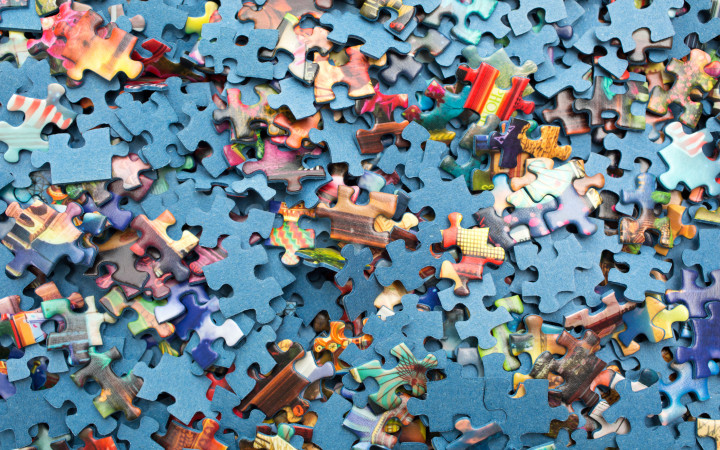Today’s Wonder of the Day was inspired by Nick. Nick Wonders, “how are puzzles made?” Thanks for WONDERing with us, Nick!
Today’s Wonder of the Day comes in all shapes and sizes. It can look like a beautiful landscape, a familiar skyline, or even outer space! It comes in boxes labeled with numbers—300, 500, 1,000, or even 2,500. What are we talking about? Jigsaw puzzles, of course!
If you’ve been WONDERing with us for a while, you may already know a thing or two about the history of puzzles. They’ve been around since at least 1760. Today, though, the process of making jigsaw puzzles has changed quite a bit.
Decades ago, people made puzzles by hand. They used jigsaws to cut each piece out of wood or cardboard. Some specialty puzzle makers still do so today, but it’s far less common. Instead, most puzzles are mass-manufactured.
How exactly are modern puzzles made? It starts with choosing the right picture. Not every piece of beautiful artwork can make the cut. The most popular puzzles are often full of detail. After all, this makes them quite a bit more manageable—imagine working on a puzzle that was just one color or pattern!
Once the image is chosen, it’s printed on special paper and pasted to cardboard. Then, they’re left to dry before going through the die cutter. You can think of this as a cookie cutter that separates the puzzle into many pieces. The design of the die cutter is unique to each puzzle and is often drawn by hand. It can take up to four weeks to make this piece of equipment.
Once the puzzle pieces are cut, they go through a machine that separates them. Finally, they’re boxed up and ready for sale. Altogether, the process of making a new puzzle takes about a year.
Of course, puzzles aren’t just for fun! They’re also good for your brain. Experts say putting together a puzzle has the same effect as trying to solve a mystery. It can stimulate different brain areas. Working on a puzzle can also reduce stress. And, of course, it feels great to place that last piece in the right spot.
Maybe that’s why puzzles seem to be a timeless source of entertainment. While they’ve been around for hundreds of years, the Great Depression saw a huge increase in puzzle sales because they offered an affordable way for people to have fun. Nearly a century later, many people again turned to puzzles while staying home during the COVID-19 pandemic. They can provide many hours of activity.
Have you ever put together a puzzle? It can be a fun way to spend time with family or friends—and there’s a wide variety of them available. No matter your preferences, there’s a puzzle out there for anyone.
Standards: CCRA.R.1, CCRA.R.2, CCRA.R.4, CCRA.R.10, CCRA.W.2, CCRA.W.4, CCRA.L.1, CCRA.L.2, CCRA.L.3, CCRA.L.6, CCRA.SL.1, CCRA.SL.2




